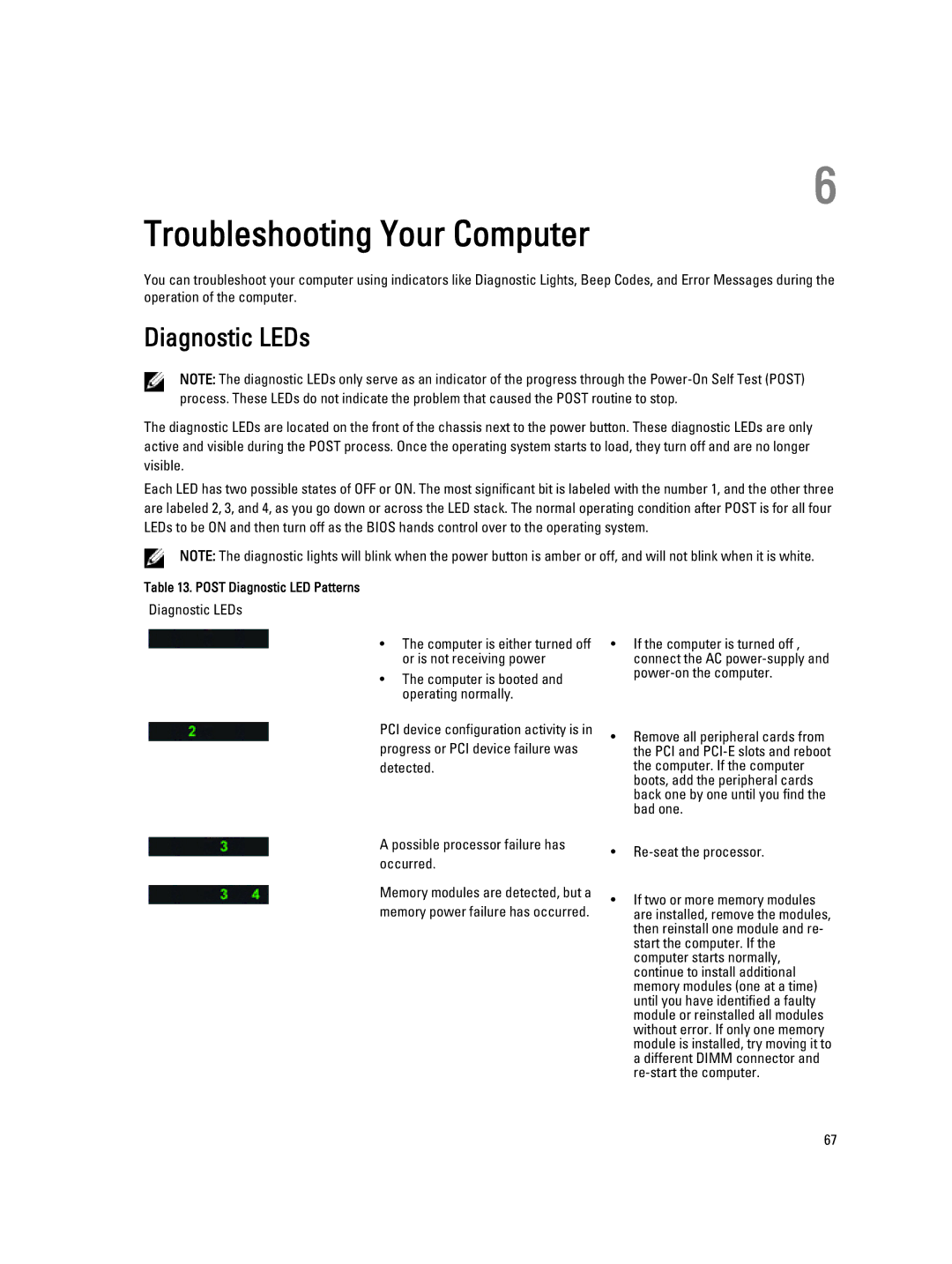
6
Troubleshooting Your Computer
You can troubleshoot your computer using indicators like Diagnostic Lights, Beep Codes, and Error Messages during the operation of the computer.
Diagnostic LEDs
NOTE: The diagnostic LEDs only serve as an indicator of the progress through the
The diagnostic LEDs are located on the front of the chassis next to the power button. These diagnostic LEDs are only active and visible during the POST process. Once the operating system starts to load, they turn off and are no longer visible.
Each LED has two possible states of OFF or ON. The most significant bit is labeled with the number 1, and the other three are labeled 2, 3, and 4, as you go down or across the LED stack. The normal operating condition after POST is for all four LEDs to be ON and then turn off as the BIOS hands control over to the operating system.
NOTE: The diagnostic lights will blink when the power button is amber or off, and will not blink when it is white.
Table 13. POST Diagnostic LED Patterns
Diagnostic LEDs
• The computer is either turned off or is not receiving power
• The computer is booted and operating normally.
PCI device configuration activity is in progress or PCI device failure was detected.
•If the computer is turned off , connect the AC
•Remove all peripheral cards from the PCI and
A possible processor failure has | • | |
occurred. | ||
| ||
Memory modules are detected, but a | • If two or more memory modules | |
memory power failure has occurred. | ||
are installed, remove the modules, | ||
| then reinstall one module and re- | |
| start the computer. If the | |
| computer starts normally, | |
| continue to install additional | |
| memory modules (one at a time) | |
| until you have identified a faulty | |
| module or reinstalled all modules | |
| without error. If only one memory | |
| module is installed, try moving it to | |
| a different DIMM connector and | |
|
67
